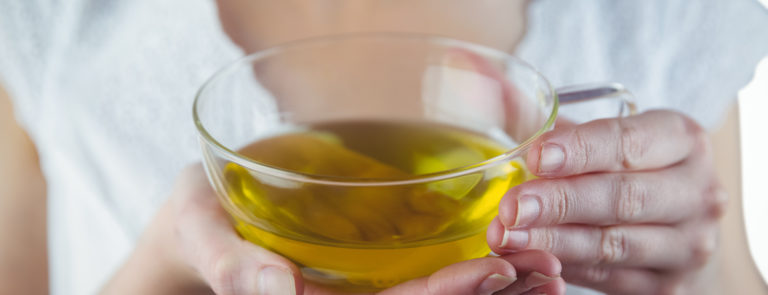15% off €35 or 20% off €45
Code:SUMMER
The health benefits of buckwheat

Buckwheat is having a moment in the nutritional spotlight. But what exactly is buckwheat, what does it add to your plate and why is it proving so popular with health-conscious eaters?
Summary
1What is buckwheat good for?
Are you wondering, is buckwheat good for you? Here are some of the highlights of this nutrient-rich superfood...
2What are the nutritional values per 100g?
A breakdown of buckwheat’s nutritional profile; from it's carbohydrate content to which minerals it's packed with...
3Buckwheat health benefits
The rise of buckwheat as a popular health food, is largely due to its lack of wheat and its high mineral and...
This pseudo-cereal is enjoying a moment of nutrition fame. But what is buckwheat and why is it proving so popular with health-conscious eaters? Before we delve into the wellness benefits of this rising superfood, let’s clarify two things.
Firstly, although buckwheat is used in the same way as grains, it’s not a grain itself. It’s actually a fruit seed that’s related to rhubarb and sorrel.
This leads to the second point – despite its name, it has nothing at all to do with wheat. So, if you’re wondering is buckwheat gluten-free? The answer is a resounding yes.
And if this is good news for you, it’s just the start. Here we outline some of the many other nutritional qualities that give buckwheat a wellness edge over other pseudo-grains, such as quinoa.
What is buckwheat good for?
Are you wondering, is buckwheat good for you? Here are some of the highlights of this nutrient-rich superfood:
- There’s certainly a healthy measure of carbohydrate content in this fruit seed. And because it ranks low on the glycemic scale, it’s less likely to cause the quick spike in blood sugar levels that’s common with other high carbohydrate grains.1
- Providing a good source of fibre, it supports digestion by aiding the smooth movement of food through your gut.2
- Although the amount of protein is relatively low, the quality is very high, as it has a balanced composition of amino acids, as well as a comparatively high lysine content.3
- Buckwheat is typically rich in manganese, copper, magnesium, iron and phosphorus.4
- Plant compounds. It provides a diverse supply of powerful antioxidant ingredients including rutin, quercetin, vitexin and D-chiro-inositol. That’s more antioxidants than many other cereal grains.2
A nutritional breakdown
Here's a breakdown of buckwheat’s nutritional profile; from it's carbohydrate content to which minerals it's packed with:5
| Per 100g | |
| Calories | 364 (1522KJ) |
| Carbohydrates | 84.9g (0.4g sugars) |
| Fat | 1.5g |
| Protein | 8.1g |
| Vitamin B6 | 0.4mg |
| Niacin | 2.8mg |
| Phosphorus | 150mg |
| Zinc | 2.6mg |
| Calcium | 12mg |
| Iron | 2mg |
| Magnesium | 48mg |
| Potassium | 220mg |
| Copper | 0.7mg |
| Manganese | 1.6mg |
| Selenium | 9mcg |
Buckwheat health benefits
The rise of buckwheat as a popular health food, is largely due to its lack of wheat and its high mineral and antioxidant content. This leads to a number of wellness benefits that include supporting good heart health, regulating blood sugar and aiding digestion.
As it contains no gluten, if you have Coeliac disease or a wheat allergy or intolerance, buckwheat can be a versatile substitute for other grains.2
If you have allergies, it is important to always check the product label before consumption to ensure there is no risk of cross contamination with gluten containing products.
For example, if you experience IBS symptoms, you may choose buckwheat due to it being low in FODMAPs (types of carbohydrates that can sometimes aggravate digestive issues).6
If you have type 2 diabetes, substituting for buckwheat can help to lower and stabilize blood sugar levels after a meal. Due to a low glycemic rating, the pseudo-grain is a healthy choice for anyone concerned about improving their blood sugar balance.1
Buckwheat offers a whole range of support to cardiovascular health. This is largely down to its high antioxidant make-up – buckwheat is a great source of flavonoids (in particular rutin.) These heart-healthy plant compounds can help to lower cholesterol, regulate blood pressure, prevent the formation of blood clots and improve blood lipid profile.7

Ways to eat buckwheat
Buckwheat is processed into groats. These are small granules that can be used in a similar way to rice. You’ll find buckwheat in the form of flour, noodles or even as flakes, making it a versatile substitute for other grain-based foods. And if you’re wondering how to cook buckwheat, here are a few ideas:
- Raw buckwheat grouts are the whole seeds and are perfect for adding to salads, granola or for making porridge.
- Buckwheat flour can be used instead of wheat flour when baking pancakes, muffins, rolls, and cookies. Take a look at this buckwheat banana bread. It can also be used to thicken sauces, soups, and casseroles.
- If you’re looking for a healthy bread, buckwheat bread is a great option. Particularly for people with Coeliac disease or a gluten intolerance.
- Japanese soba noodles are made from a combination of buckwheat flour and wheat flour (but beware, they aren’t gluten-free).
- Buckwheat pasta can be used as a gluten-free alternative when cooking pasta dishes.
Summary: Is buckwheat good for your health?
When it comes to nutritional profile, buckwheat outshines most grain equivalents in almost every measure of healthfulness. This is mainly down to its rich antioxidant content and low-glycemic rating. It’s also gluten-free, making it a great alternative for anyone looking to cut out or avoid wheat.
Feeling inspired?
Shop our range of buckwheat products and try our tasty almond and buckwheat pancake recipe
.
- Buckwheat: Glycemic Index (GI), glycemic load (GL) and calories per 100g [Internet]. Glycemic Index Guide. 2021 [cited 2024 Jul 1]. Available from: https://glycemic-index.net/buckwheat/
- Sajad Ahmad Sofi, Ahmed N, Farooq A, Rafiq S, Sajad Majeed Zargar, Kamran F, et al. Nutritional and bioactive characteristics of buckwheat, and its potential for developing gluten‐free products: An updated overview. Nutritional and bioactive characteristics of buckwheat, and its potential for developing gluten‐free products: An updated overview. 2022 Dec 22;11(5):2256–76.
- Luthar Z, Zhou M, Golob A, Germ M. Breeding Buckwheat for Increased Levels and Improved Quality of Protein. Plants. 2020 Dec 24;10(1):14.
- Klepacka J, Najda A, Klimek K. Effect of Buckwheat Groats Processing on the Content and Bioaccessibility of Selected Minerals. Foods. 2020 Jun 25;9(6):832.
- Buckwheat nutritional table, 100g. Public Health England. Composition of foods integrated dataset (CoFID) [Internet]. GOV.UK. 2015. Available from: https://www.gov.uk/government/publications/composition-of-foods-integrated-dataset-cofid
- Pejcz E, Wojciechowicz-Budzisz A, Spychaj R, Gil Z, Harasym J. Fructan Concentrations in Cooked Cereal Grains as a Nutritional Consideration for Low-FODMAP Diet. Molecules [Internet]. 2024 Jan 5 [cited 2024 Jul 1];29(2):282. Available from: https://www.ncbi.nlm.nih.gov/pmc/articles/PMC10820302/
- Szawara-Nowak D, Bączek N, Zieliński H. Antioxidant capacity and bioaccessibility of buckwheat-enhanced wheat bread phenolics. Journal of Food Science and Technology. 2015 Oct 31;53(1):621–30.



